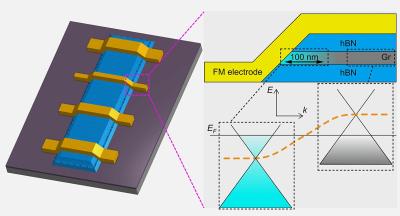Scientists find an exotic 'multiferroic' state in a 2D material
Scientists from MIT, Arizona State University, National Institute for Materials Science in Tsukuba, Université de Liège in Belgium and Italy's CNR-SPIN have discovered an exotic "multiferroic" state in a material that is as thin as a single layer of atoms.
Their observation is the first to confirm that multiferroic properties can exist in a perfectly two-dimensional material. The findings could pave the way for developing smaller, faster, and more efficient data-storage devices built with ultrathin multiferroic bits, as well as other new nanoscale structures.
